Hedgehogs in the UK are in trouble. An incredibly resilient species which can live in a vast range of environments and thrive on all sorts of food hedgehogs have been doing well for 15 million years. But in the last 50 years, human activity in the UK has pushed them to the edge of extinction.
Our gardens are becoming an ever more important haven for hedgehogs and all wildlife. Providing a hedgehog house along with the freedom to roam and fresh food and water help to give hedgehogs a chance. In fact, the evidence is that hedgehogs populations are actually on the rise in some urban and suburban areas, thanks to the help we offer in our gardens.
So a hedgehog house could be one of the most important purchases you make this year.
In this article, we are going to look at how to choose the best hedgehog house. We'll look at what to avoid as well as giving you our top picks for homes in four different categories.
The Best Hedgehog House 2025
Why Buy a Hedgehog House?
One of the main reasons that hedgehogs are endangered in the UK is the loss of habitat. Hedgehogs like hedgerows, and other undergrowth: to nest in, to breed in, to hibernate in and to feed in.
Hedges are disappearing. In the countryside, intensive farming means fields are getting bigger and bigger, and often edged with fences, not hedges.
In towns and cities, gardens are getting smaller and tidier. There is little room in most gardens now for large trees or shrubberies. And particularly in new developments, boundaries are marked by walls or fences, not hedges.
So places for our prickly friends to feed, sleep and raise a family are hard to find.
By installing a hedgehog house in your garden, you offer local hogs safe haven and compensate for some of the hoggy habitats us humans have destroyed.
How Will My Hedgehog House Be Used?
Hedgehogs use hedgehog houses in several ways.
Feeding station. If you are offering food and water to your local hogs it's an excellent idea to put it in a feeding station. The feeding station not only serves to keep the food dry, it also offers the feeding hog some protection from predators and pets whilst eating.
Daytime Nest. Hedgehogs are nocturnal and sleep in the daytime. Between pets, children and gardeners, our gardens can get quite busy during the day when hedgie is trying to get a bit of kip. A hedgehog house can offer a safe hideaway for a daytime nap.
Breeding Boxes. Female hedgehogs spend several weeks in the nest once or twice each year giving birth to, and raising hoglets. This is a crucial time for both the individuals and the species. So providing a safe environment for your local hogs to raise a family is a great use of your hedgehog house.
Hibernation. Another challenging time of year for hedgehogs. Finding a suitable hibernation site is crucial to a hogs survival into the next year and breeding season. With suitable locations ever more challenging to find hedgehog houses are playing a more and more critical role in successful hibernation.
Rescue Box. Hedgehogs are wild animals and should usually be left to their own devices. But because the species is endangered now, each individual hog must have the help they need to survive. Sometimes then, we may need to take a hog out of the wild, either to get it to the vet, to fatten it up a bit before hibernation, or to offer it shelter over the winter months if it's not able to hibernate. This calls for a slightly different type of house. We go into more details later.
What to Look When Buying a Hedgehog House
Size Matters.
Though hedgehogs may be relatively small, they build pretty big nests. The nest needs to be big for insulation during winter and to allow room for a family if it's being used as a breeding box. Even a feeding station needs a certain amount of space to allow the hog to move around the dish.
So a hedgehog home should be at least 35cm square.
Predator Proof.
When hedgehogs make their own nests, they create a tunnel at the entrance to keep predators at bay. Your hedgehog house needs to provide something similar. Look for either a tunnel or a hallway or "vestibule" area between the entrance and the main chamber.
If you go for a model with a tunnel, make sure it is long enough so that cats and foxes can't reach their paws in. 20cm at an absolute minimum, longer is better.
Also, beware of entrance size. Hedgehogs only need quite a small opening to get through, 13cm square is enough for them. So avoid houses with doorways much bigger than this as they just allow easier access for predators.
Sturdy Construction
All the houses we are looking at here (other than the rescue box) will be outside in all weathers. Anything flimsy will not last long in the British climate. Solid wood is a good choice. If this is treated with animal safe preservatives, it should last a good few years.
Plywood houses are cheaper but don't expect to get more than a year or two out of them.
Houses "thatched" with bark, straw or twigs may look nice, but once the thatch starts to come loose, which it will, they will quickly disintegrate as birds and other animals pick bits off for nesting.
A Solid Floor
There are two reasons to choose a hedgehog house with a solid floor.
The first is predator proofing. Foxes and cats have been known to tip up houses with not floor, to get at the hog inside.
Second is warmth, dryness and weatherproofing. A floor provides some protection from the elements in itself. Some of them also are damp proofed or fitted with heat-reflecting membranes. Houses with floors can also be raised off the ground on bricks or stones, to further help to keep them dry.
A Waterproof Roof.
No one likes a leaky roof - including hedgehogs. Make sure you choose a house with some kind of waterproofing on the roof.
Like our own houses, a hedgehog house will also stay watertight for longer if the roof isn't flat. Water and melting snow will sit on a flat roof, eventually causing it to rot. A pitched or sloped roof allows the water to just run off and will therefore last longer.
Easy Access for You.
Whatever you are using your hedgehog house for you will want to clean it at some point. So a hinged or detachable lid is essential. But also be sure that the lid has strong and secure closures and catches. As anyone who has ever kept chickens will tell you a fox will open an unlatched lid or door, no problem.
What To Avoid When Buying a Hedgehog House
Metal Frames.
Or other potentially sharp edges. Underneath all those spikes hedgehogs are delicate little creatures, who scratch and injure themselves easily this goes double for hoglets. Metal framed hedgehog houses often have sharp points and edges. These are best avoided. Whatever hedgehog house you buy check it over for points and sharp edges before you put it out.
Plastic
I am a great fan of recycled plastic, and there are a growing number of hedgehog houses made from this material. Whilst these could be fine as feeding stations we worry about how comfortable they would be to nest or hibernate in. Without really good ventilation, a plastic hedgehog house is likely to collect damp and condensation, leading to mould and mildew and a generally unpleasant and unhealthy nest. So think carefully before buying a plastic hedgehog house, maybe natural materials are better.
Straw, Twigs or Thatch
These may look cute, but they are not very sturdy construction materials, and they will be picked at by birds and other animals as nesting materials. We suggest you avoid these houses if you are looking for something that will last.
Our Top Hedgehog House Picks for 2020
Best All-Rounder

There are plenty of reasons why this product is an bestseller with over 2,000 5 star reviews. Whether you are looking for a feeding station, hibernation house, breeding box or night-time nest, this model has you covered.
- Made from sturdy solid wood and treated with an animal-safe antibacterial preservative.
- Fixed wood floor to keep out the damp and predators.
- Internal partition for predator proofing.
- Correctly sized entrance and internal doorway.
- Sloping, felt-covered roof for waterproofing.
- Roof is removable for easy cleaning, with secure fastenings to keep our Mr Fox.
- Plenty of room inside for feeding or daytime nesting. The addition of the Extension Tunnel makes it perfect for breeding and hibernating too.
- Made in England.
- Delivered fully assembled.
Best For Cold Climates
Deluxe Ventilated Hedgehog House

If you live in a colder climate prone to snow, it is easy for your hedgehog house to become completely buried in the winter. This can cause breathing problems for a hibernating hog inside.
This house overcomes that problem with the addition of a long ventilation tube, which will allow you to keep a flow of fresh air, without disturbing a hibernating hog, even if the house becomes completely buried.
The house has just one, large internal chamber and a very long access tunnel, which offers excellent predator proofing and plenty of space for your hogs inside.
Even if you are not expecting a snowy winter this house ticks all the boxes for a great nesting home or feeding station.
- Sturdy construction using sold, Forestry Service Certified timber.
- Treated with animal-safe antibacterial preservatives to prevent the spread of diseases.
- Long predator-proof entrance tunnel, retractable for storage and transport.
- Solid wood floors for insulation and predator proofing.
- Roomy internal chamber for nesting, breeding hibernation or feeding.
- Solid, felted roof on house and tunnel.
- Removable lid with secure catches for easy feeding.
- Made in England.
- Delivered fully assembled.
Best for Breeding and Hibernation
Camouflage Hedgehog Heat Reflecting Hibernation House

There are three big bonuses with this house.
The first is - it's BIG. One of the biggest hedgehog houses on the market it offers plenty of space for even the largest mature boar to hibernate, or for a female to comfortably raise a litter of hoglets.
Secondly, heat-reflecting floor insulation reflects the hogs body heat back into the house, helping to keep hoglets and hibernators cosy and dry.
And finally, the house is camouflaged, helping it blend into the undergrowth and making it more of a natural feature for your hogs.
If you are looking for a house that will cater to all your hedges needs throughout the year and prepared to spend a little more, this is it.
- Robust and solid timber construction throughout.
- Built from sustainable wood.
- Treated with antibacterial preservative.
- Very large internal chamber.
- Solid wood floors, with heat-reflecting insulation throughout.
- Sloping, felted roofs for effective rain proofing.
- Long, retractable predator-proof entrance tunnel.
- Secure fastenings on lid and side door.
- Made in the UK.
- Minimal assembly required.
Best For Rescuers
Indoor Stackable Hedgehog Rescue Box

We would all prefer to see hedgehogs out and about in the wild. But there may be times when you need to help a hog by taking into care for a while.
This house was initially designed for guinea pigs. But it has since become popular with hedgehog hospitals and rescuers up and down the country.
It offers everything you need to keep a hog comfortably for a few hours, a few days or even over winter.
- Separate nesting and feeding areas.
- 3 ft overall length offers some space for exercise.
- Wire inserts for viewing.
- 2 latched doors to allow easy access with no danger of escape.
- Solid wood construction.
- Made in the UK.
- Delivered fully assembled.
When Should You Put Out A Hedgehog House?
Anytime!
As we've seen, hedgehogs have lots of different uses for hedgehog houses, all through the year.
Even during winter, they will wake and move house a couple of times.
So anytime is a good time to put out your new hedgehog house.
Where to Put Your Hedgehog House
If you are planning for your hedgehog house to be used for nesting or breeding, you need to choose a quiet corner, away from busy areas or your garden and ideally in shrubs or undergrowth.
Do not place the house in a position that gets very wet in the winter, and be sure to face the entrance away from prevailing winds - on one likes a draughty house.
Also, avoid placing the house in direct sunlight, this could make it too hot for hoglets in the breeding season.
If you are using your house as a feeding station, you can choose a more open position in your garden, perhaps where you can watch the comings and goings from your house or patio.
What Should You Put in Your Hedgehog House?
Hedgehogs don't like to feed and nest in the same place, so what you put in your hedgehog house will depend on how you want the hogs to use it.
Take a look at this article for a full guide.
Conclusion
Hedgehogs in the UK are in trouble and need our help. Buying a hedgehog home can be a great way of helping them.
There is a massive choice of hog homes available now. Whatever your budget, there is a hedgehog house for you.
We hope we've given you some useful pointers on how to choose the best hedgehog houses, what to look for and what to avoid.
If you have questions or suggestions we would love to hear them, leave us a comment below.
Happy shopping!
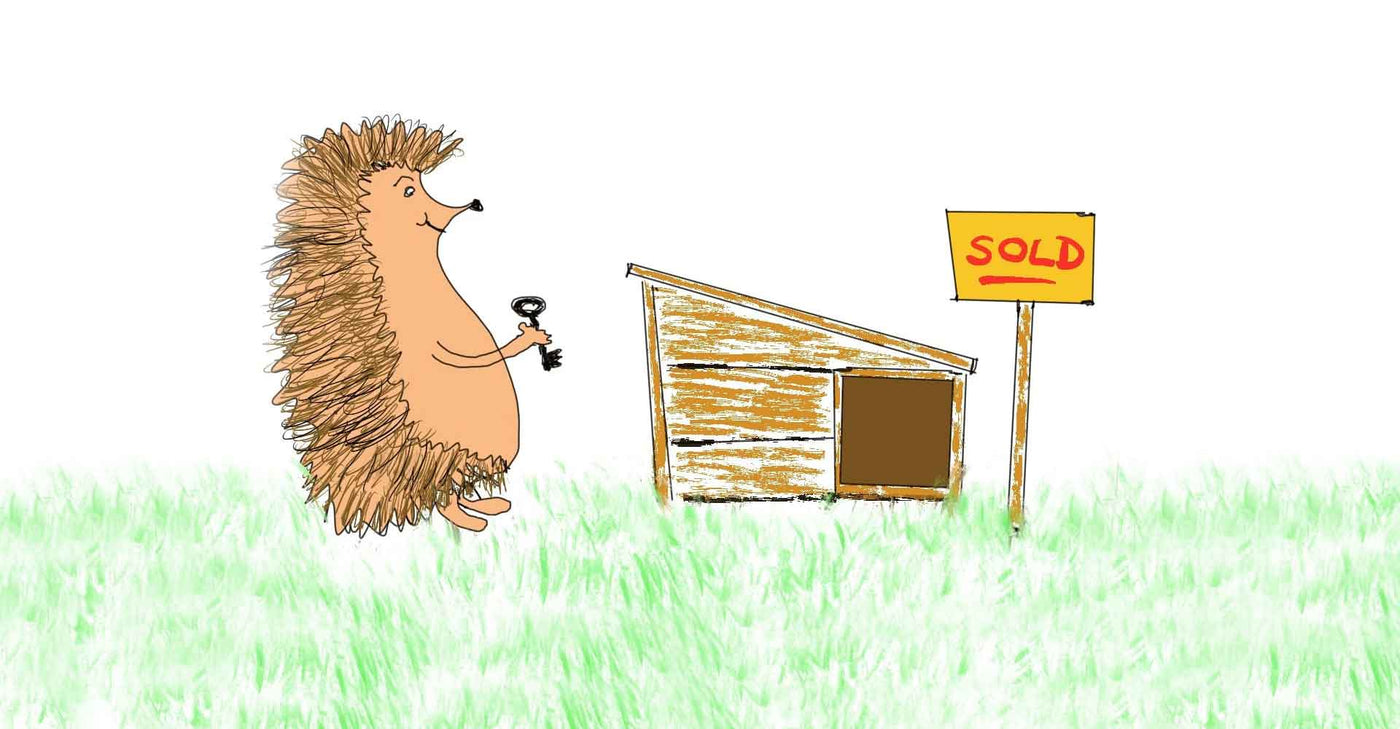

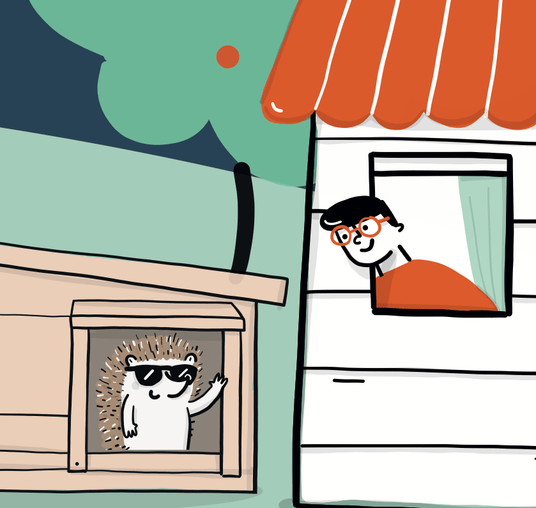
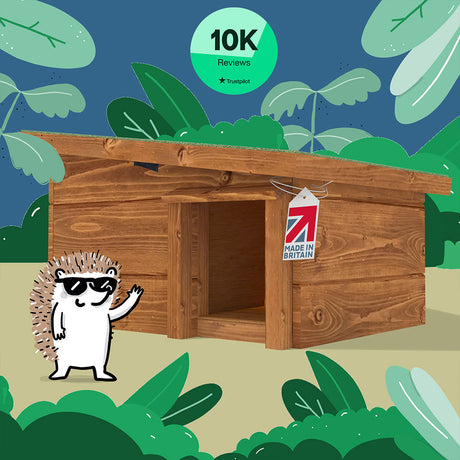
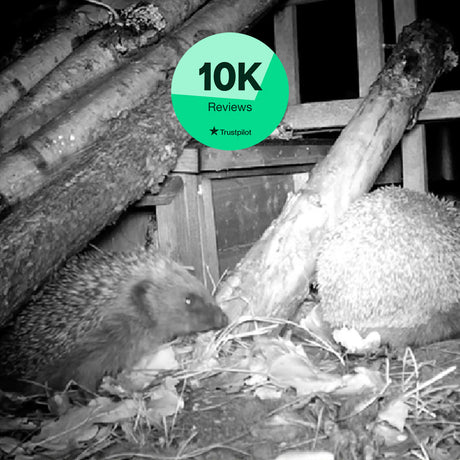
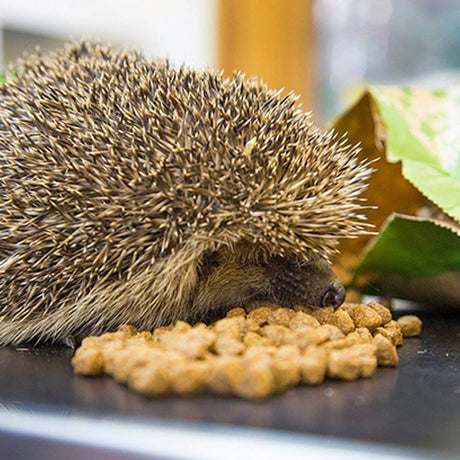
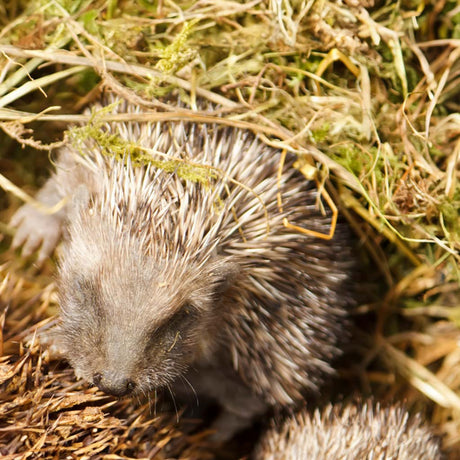
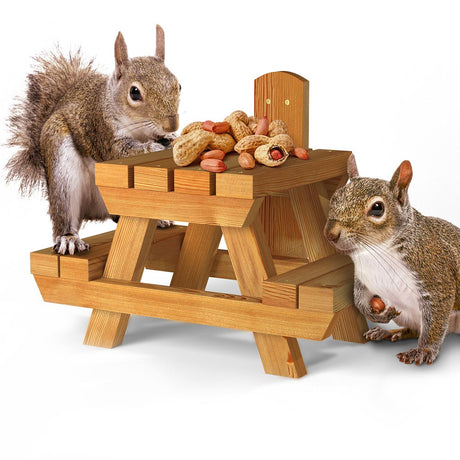



3 comments
Thanks for this helpful information. How do hedgehogs know you’ve got a home waiting and what are the chances of a rats taking over before they find the home as I know there are rats but I don’t want to encourage them?
Thanks Mandy
Hi Clare
I’m struggling here. I love your article and am trying to find a hibernation box with internal baffle. The top recommended house on your site looks great, but you say the sleeping area should be no smaller that 35cm² to allow the hedgehog to get enough insulation in, yet this one is only 27×22cm. Then another box on your site looks great, but you state that hedgehogs need a door of dimensions 13cm², but this is only 12cm². I’m stuck and don’t know what to believe! Please help!
Kind regards
Rachel.
Hi Joan,
The high tech answer is a trail cam, which will show you exactly whats going on in your garden at night.
The low tech way is to sprinkle a bit of flour in front of the food dishes and look for footprints.
Best of luck
Clare